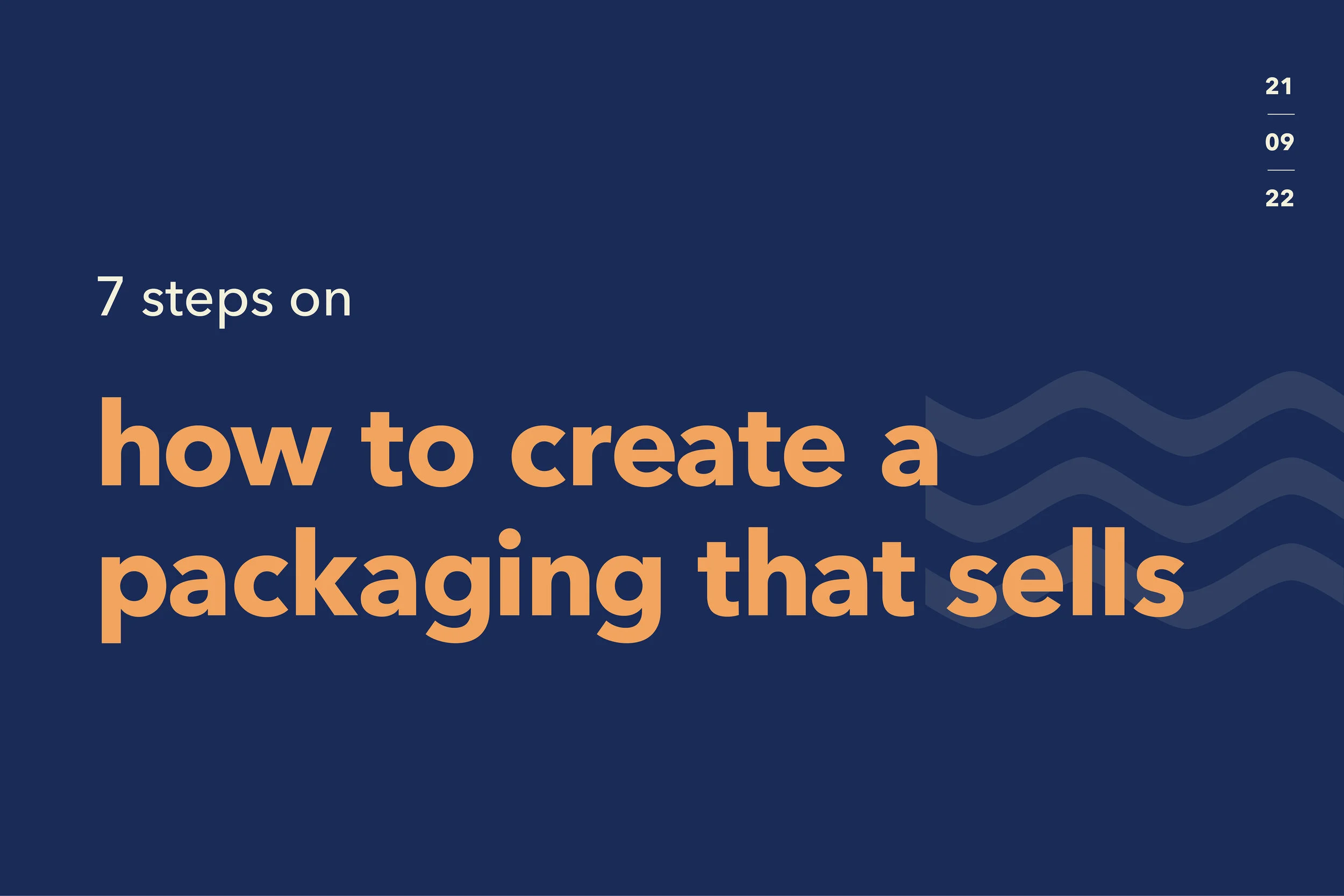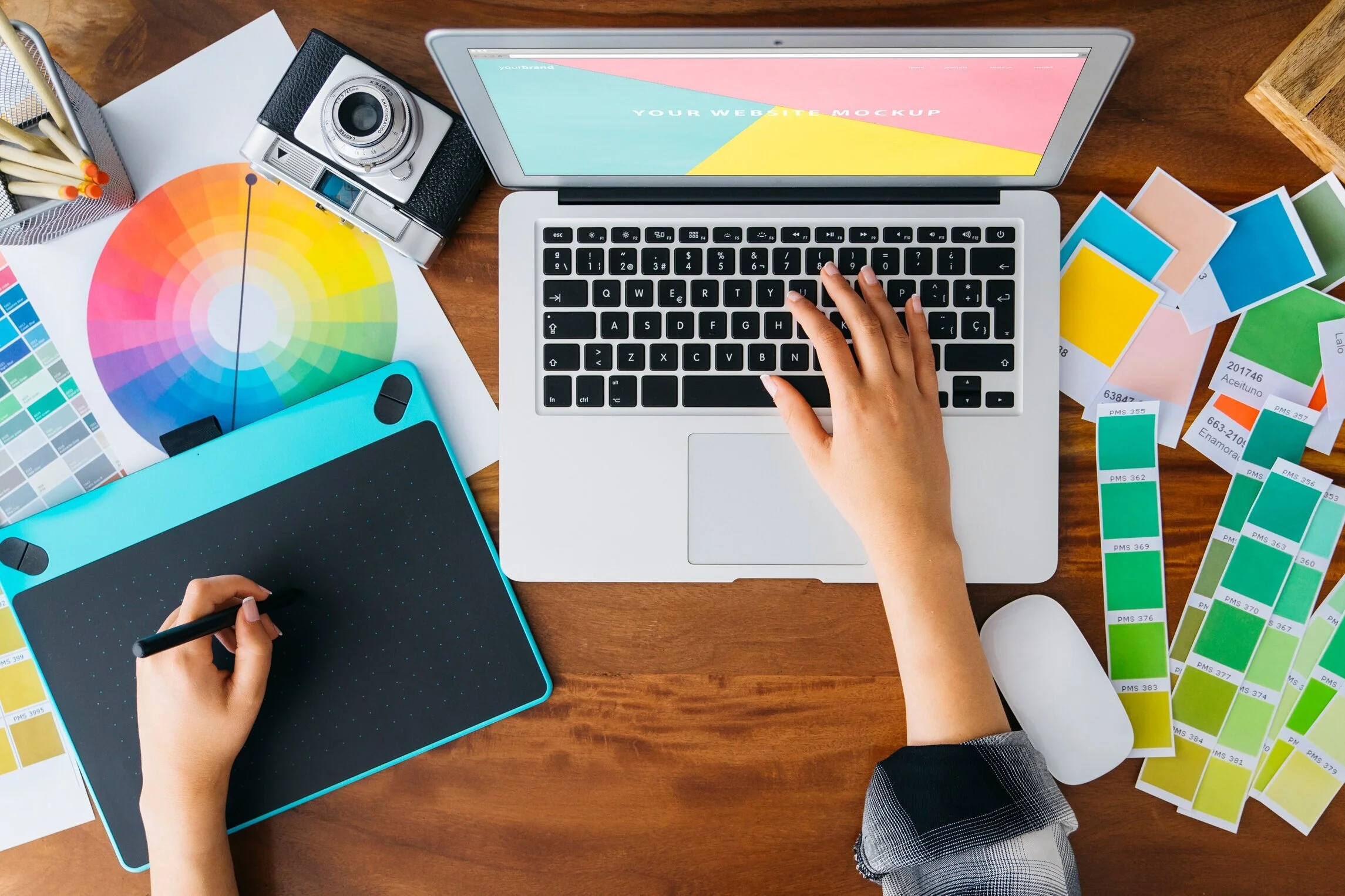How to create a packaging that sells
It takes about 0.33 sec for a consumer to form an opinion about your brand. If you have a natural product-based business, your packaging is the first brand touchpoint die-hard health nut customers will see. If you have scroll-stopping packaging that grabs their attention, along with showing values that speak to them, it is likely they will put it in their shopping cart and give it a try. If it doesn't? Your products will collect dust on the shelves.
But how do you create a packaging that makes your ideal customer say, " I need that face cream yesterday?" No worries, I'm here to help! Follow these 7 steps below to create packaging that makes your product jump off the shelves.
Steps to Create a Packaging that Sells:
Build your rock-solid foundation (ICA, Brand Persona)
Research your direct/indirect competition
Create Your perfect packaging (gather visual elements/styles, information included on packaging
Select your containers and boxes
Decide the focus of your packaging
Find the right designer
Start the design process
Let's dive into each of these a bit deeper!
01. Build your rock-solid foundation
Before jumping on the visuals, it is necessary to clarify a few things and create a crystal clear action plan. Firstly, choose who is our ideal customer. Are they moms trying to create a healthy lifestyle for their families? Or maybe young professionals who care about ethically sourced products? Different people respond to distinct visual, auditory, and verbal stimuli.
Once you defined who you are doing all this hard work for, you are ready to create your brand persona/identity. Think about your brand as a living, breathing human being. How would this person talk and act? What values do you share with your target audience? Each of these aspects will come back in your communication and visual appearance as you use different words, colors, patterns, etc. when you try to show up as a high-energy and bubbly person versus a calm and wise one.
02. Research your direct/indirect competition
Now that you know who you are focusing on, you can get inspiration from direct and indirect competitors targeting a similar audience.
Find 3-5 brands and try to write down the following for each of them:
what they are doing well - helps with getting inspiration for your business
what they are not doing well - helps to show your audience that your brand is better at these areas
what makes you different from them - creates a differentiating factor that will set your business apart
If you sign up for my Create Your Standout Brand Experience Challenge, you will receive a workbook that can help you define these, along with some helpful information and resources. Click here to sign up now!
03. Create your perfect packaging
It is finally time to start putting some visual directions together. Based on your previous customer and competitor research, start creating mood boards with potential color, font, photo, and texture options. Once you have about 3-5 directions, narrow down to the one in line with your vision the most. Create a Brand Styleguide that your vendors can use to create on-brand assets at all times without the hassle of explaining your business over and over.
Now it is finally time to collect all the information that will go on your packaging. Create a brand assets folder with your copy, SKU numbers, barcodes (in the correct format), weights, badges, etc. Download the "What to Include on Your Packaging" checklist at the end of this article to make sure you don't miss anything you should include on your packaging to look professional and established.
04. Select your containers and boxes
After you gathered all the information and visuals you need, it's time to select your bottles and boxes. Select the containers for each of your products, along with shipping boxes and/or bags. Request dielines/cutter guides that you will put your final artwork on. Unless you hire an agency that takes care of this, it is your responsibility to have them ready for your chosen designer. Include these in your brand assets folder that you will hand over to your designer as a neat, organized package.
If you find it difficult to decide, make sure to hire a designer who can assist in selecting these. However, this will make the investment hire and the duration of working with a designer longer. Make sure you have a proper budget if you decide to go on this route.
05. Decide the focus of your packaging
When a potential customer looks at your product you only have a split second to get your message across. What is your aim with your packaging? What is that one thing you want the consumer to see? Is it to increase your brand awareness? Display your logo as the largest element on the front of your package. Is it to inform customers about the different ranges in your products? Increase the font size to draw attention to it. Focusing only on one core element will help you get your key message across.
06. Find the right designer
If you decide not DIY-ing your packaging and you finished strategizing and selecting your packaging and branding, you are ready to look for a designer. There are three routes. Hiring an agency, finding a freelance designer, or launch a design contest. Hiring an agency is probably your most expensive option, but it also decreases the risk of not getting what you envisioned. A freelance designer is your middle ground price option. However, make sure you look at your chosen freelancer's previous works. Schedule an initial consultation to see if you two are a good match. The budget option is to create a design contest. Make sure you supply all the gathered information to avoid designers creating something far-fetched.
07. Start the design process
Woop Woop, you are finally ready for the design process. Share everything with your selected designer, and ask them to create life-like mockups for you to evaluate and provide feedback.
Ask the following:
Does it grab my ICA's attention?
Is it clear what this product is from the packaging?
Is the packaging self-explanatory and easy to use?
Would it have a shelf presence next to competitors in stores?
Will this design still look relevant in 5 years?
It's not enough to say, "I don't like this design." Always explain why something is not working to your designer to take out the guessing work so he/she can make adjustments accordingly. After all, non of us reads minds.
I hope this article answered your questions about packaging design that gets people's attention. What other questions do you have about packaging design? Ask them in the comments below, or send me an email at hello@llpeach.com! I would be happy to help you move the needle in your business and get the attention your products deserve!








